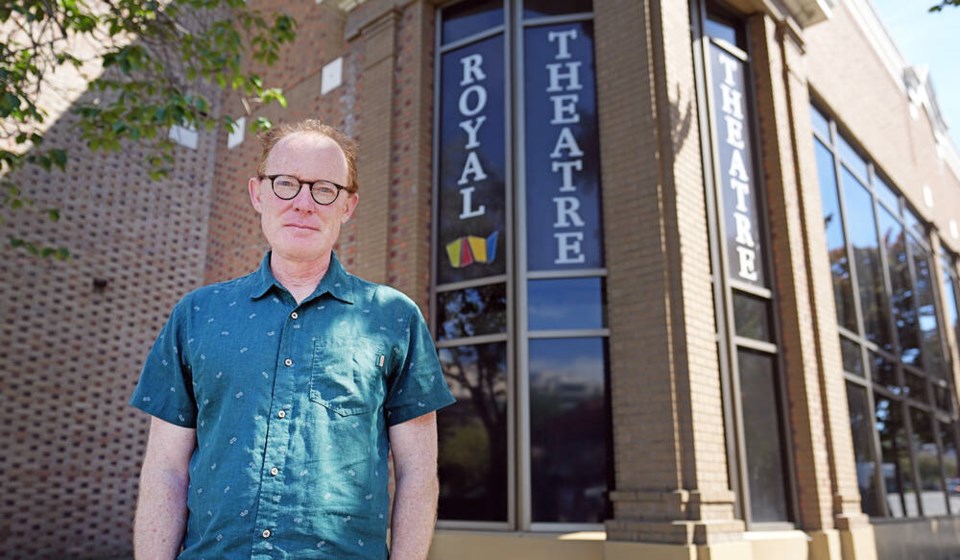More local taxpayers would share the costs of running the McPherson and Royal theatres, as well as the Charlie White Theatre at Sidney’s Mary Winspear Centre under the new model.

The costs of running the three major civic-funded theatres in Greater Victoria could soon be shared by more taxpayers under a new, fairer model that has been approved in principle at the Capital Regional District — a move welcomed by arts organizations across the region.
The CRD is directing staff to look at setting up a regional funding model where taxpayers from the 13 municipalities and some Gulf Islands all contribute to the operating costs of the McPherson Playhouse and Royal Theatre in Victoria and the Charlie White Theatre in Sidney.
Victoria Symphony CEO Matthew White said the CRD just took a meaningful, long-overdue step toward supporting a better arts scene in Greater Victoria.
“Until now, a small number of municipalities — especially the City of Victoria — have shouldered the cost of facilities used by the entire region,” he said in an email.
The current system is fragmented and funding has not kept pace with inflation, causing a “lose-lose dynamic” where venue operators are forced to try and keep themselves afloat over supporting the local arts scene, he said.
“This new direction gives us a real chance to stabilize the system and plan for the future.”
Victoria Mayor Marianne Alto said a similar initiative was put forward to the CRD about five years ago but failed at the board level.
In an interview, Alto said she’s “very hopeful” that it’ll succeed this time.
Civic funding for the 772-seat McPherson Playhouse at Centennial Square has remained unchanged for 27 years — an annual sum of $750,000 coming solely from the City of Victoria.
The purchasing power of those funds has fallen by 40 per cent since it was established in 1998, while costs have risen by a similar amount, according to analysis from consulting firm Nordicity.
The 1,416-seat Royal Theatre, which receives funding from Victoria, Saanich and Oak Bay, only saw modest funding increases last year; the 310-seat Charlie White Theatre at Mary Winspear Centre is funded by Sidney and North Saanich.
Nordicity’s report shows the theatres — which together drive a substantial chunk of culture and arts in the region — draw in visitors from across the capital region, with only 30 per cent of theatre attendees hailing from the municipality where the theatre is located.
The firm, hired by the CRD to provide solutions on how to best fund arts across the region, recommended that the new model include a $350,000 grant that would subsidize annual theatre rental costs for local non-profits and educational groups.
Chris Gilpin, CRD manager of arts and culture, told the CRD board the theatre rental grant would be a game changer that could bring in between 60 to 80 more shows every year, as rental costs would be cut by half for those groups.
The model being considered also provides $120,000 in annual funds for those looking to build a new theatre in the West Shore, where advocates have been looking to set up an arts centre for close to two decades.
Judith Cullington, president of the Juan De Fuca Performing Arts Centre Society, said the CRD vote was a huge step forward for the arts in the region and the West Shore, given that the changes indicate clear support to build another regional theatre.
“It’s very clear that it’s not just the West Shore that’s pushing for a regional theatre out there, it’s the whole region that’s saying that this is a good thing,” she said in an interview.
Cullington said her society polled arts groups in the West Shore this spring and found a clear desire for a 350-seat publicly owned theatre with classrooms, a pottery studio, space for writers and rehearsal space.
A feasibility study conducted in 2022 said a centre would cost about $40 million to build and would require $415,000 in annual public funding.
Cullington said her group is still on the hunt for a suitable location.
> See THEATRES, A2
All but one director at this week’s CRD board meeting voted in favour for staff to return with a plan to implement the model, which will likely need to go through an alternative approval process before it can be enacted.
Metchosin Mayor Marie-Térèse Little, who voted against the plan, said her municipality, which has an operating budget that’s about three per cent of Victoria’s, is financially strapped and that Metchosin is already supporting its own arts and cultural community centre.
But the funding model got an unexpected show of support from Paul Brent, the electoral area director for Southern Gulf Islands.
Brent asked to amend the plan so that his electoral area would be included as part of the taxpayers, a move unanimously welcomed by the other directors on the board.
“I’m not an arts guy … but I’m a numbers guy, and arts contributes massively to the economy of this region,” he said at the meeting. “If you have a vital arts community, you have a heck of a community.”
“I’m also Canadian, and Canadians believe in equity. And there’s an equity problem right now,” he said. “It’s just inappropriate regionally we don’t pull our weight as far as I’m concerned.”
People living in the CRD’s three electoral areas were not included in the initial Nordicity recommendation.
Al Wickheim, electoral area director for Juan de Fuca, said it would not be right for people living in the Juan de Fuca area to contribute to regional theatre funding due to the distance the theatres are located from his rural electorate. The director for Salt Spring Island was absent from the meeting.
The CRD is considering a regional theatre funding model that will cost around $2.3 million a year, which is estimated to cost households between $10 and $19 in annual taxes, depending on jurisdiction.
[email protected]